I kept stumbling on articles proclaiming that Sweden is running out of rubbish so, while in Sweden for the summer, I did a little research. Why are Swedes so good at recycling, and are they really recycling 99% of all their trash?
Sweden aims for zero waste
Swedes have always been diligent recyclers. I remember returning empty bottles and cans even in the 1980’s. I have no data on this, but my guess is that when you grow up doing something, and it’s easy enough to continue into adulthood, then you simply keep doing it. For Swedes, separating recyclables is just another good habit.
Today, most Swedes separate their recyclables at home and put each item into its rightful container. (Some communities in the United States have similar programs.) While visiting my cousin in Lund, I wanted to know how it works. Does he feel like it’s a pain? Too time-consuming? The answer was no, it’s easy.
“Well then Rebecca’s going to ask to see your garbage,” was my darling American husbands response. “If you don’t mind…” I cringed. Asking to see someone’s garbage sounds just as odd in Swedish as it does in English. But I suppose this is the job I’ve chosen to do, so out we went and looked at his trash.
There were containers inserted into containers. Inside the regular-looking garbage cans that most single-family homes have all over the world were bins for most types of household waste. There was one for metal packaging, clear glass, boxes, and plastic packaging. The other container separated organic waste. One for food waste, one for yard waste. The system seemed straightforward enough. Yep, there’s the picture of his garbage can.
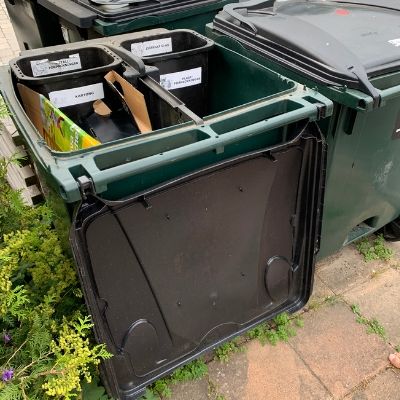
Community recycling centers
Not every home has this level of separation though. I spend most of my time in a summer home with one American style garbage can since the house is only used in the summer and no one wants to pay the higher fees for recycling to be picked up. So for me to recycle required a five minute drive to the community recycling center, which just happens to be located next to my second favorite bakery in town (so much fresh baked bread, so little time) so recycling was right on my way anyway. But the system is clearly different in every community since I didn’t have access to the nifty trash cans with dividers.
On my way to the recycling center, and near by bakery, I found seven large recycling pods that I believed to be community recycling plant. There was a space age looking pod for newspapers, clear glass, colored glass, plastic packaging, paper packaging, food waste, metal packaging, and general garbage that doesn’t fall into one of these categories. Into those pods went the giant box that once contained an art kit. Then I diligently disassembled a box of wine (paper packaging and metal packaging) and disposed of clear glass and colored glass separately.
When I was done, I still had some clear plastic wrap that didn’t have a designated pod. As I looked up I saw the public recycling center I should have gone to in the first place right across the street. Ironically, there were two recycling areas right across the street from one another. One for a private apartment complex. One for the public. The fancy pods weren’t meant for me so I headed across the street.
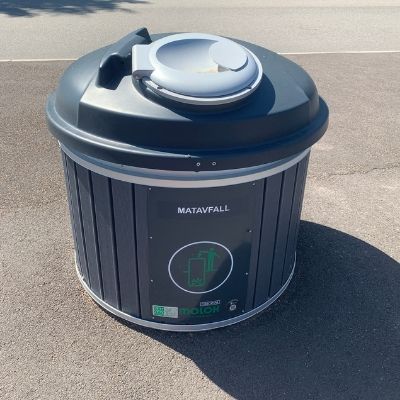
There, I found a place for my plastic wrap and a conveniently located container for clothing donations. The containers looked just like the recycling and garbage containers you’ll find at most public schools or in back ally’s behind grocery stores. But instead of there only being two containers (one for recycling and one for garbage) there were 13. Which brings me to why Sweden is able to recycle about 50% of all garbage and the other 50% is burned to heat homes in a waste-to-energy garbage incinerator. Separating recyclables by category keeps each material from being contaminated and ensures higher recyclablility of everything.
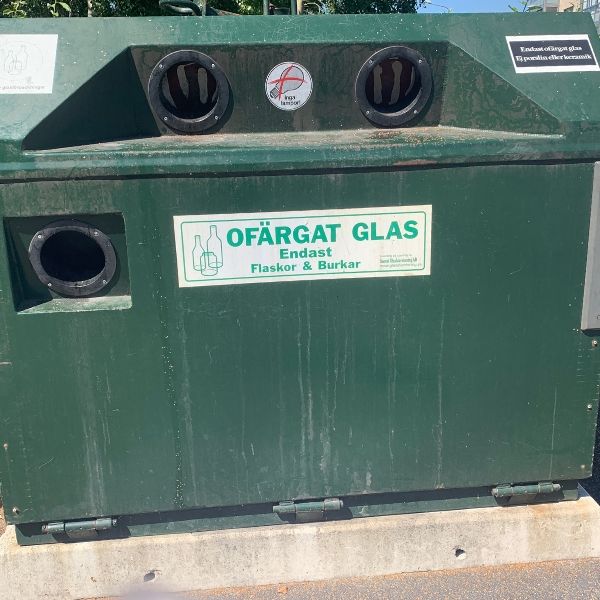
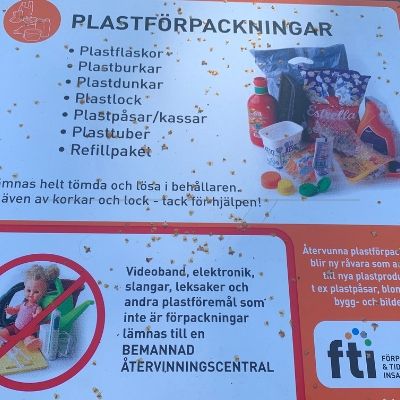
A place for items that can be reused
Back at the beach house I had one more thing to get rid of – an old car seat. I headed to the Red Cross to donate it but was promptly informed that the Red Cross does not accept car seats because they can’t ensure safety, but that I could bring it to the public waste and recycling center and put it into the “reuse” area. Turns out, there was ANOTHER recycling center in this town of 20,000 residents. I embarked on the three minute drive to the most well organized public dump I’ve ever seen.
I found the same recycling bins as at the small recycling center, plus many of the same areas you might find at a public dump in the US. There was a place for old refrigerators, hazardous waste, yard waste, used wood, and finally the place I was looking for. There was a building clearly marked “Återbruk” which translates to “Reuse.” Inside I found old cabinets, skis, plates and silverware. I placed the car seat next to the skis and headed home.
Not a perfect system
Overall, it was easy when I knew where to go, but friends confirmed that it’s not a perfect system. Each community offers different pick up services and home owners and HOAs can pay to have more or less picked up. Some people are extremely diligent at recycling, and others throw everything into the dump, just as people do in the United States. People tend to be the same all over the world, I suppose. But overall, the Swedish recycling system does make it easy and convenient for anyone willing to spend a few extra minutes keeping materials separated so they can stay in use longer.
It also seems like it’s generally agreed upon that recycling should be easy, and for the most part it is. The mobile phone store had a big recycling box for old cell phones, and H&M of course had a big box where you can drop of old clothes for recycling.
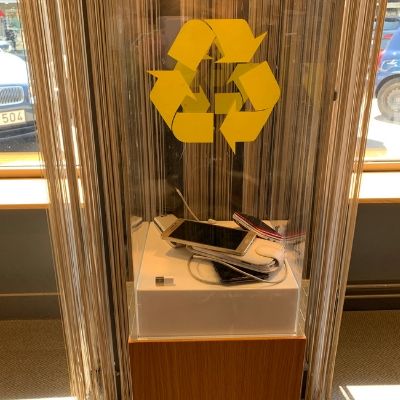
How much does Sweden recycle?
Here’s a quick breakdown:
– 50% of the household waste was turned into energy.
– 85% of bottles and cans were recycled in 2017
– 69% of all packaging was recycled in 2017
Sources: Swedish Waste Management Association, Swedish EPA, and Sweden.se
Waste-to-energy incineration plants produce heat from garbage to warm homes. Calling this recycling is controversial, but it does keep a huge chunk of Sweden’s waste out of the landfills.
So is Sweden’s recycling system revolutionary? Maybe not. But it’s not bad.
